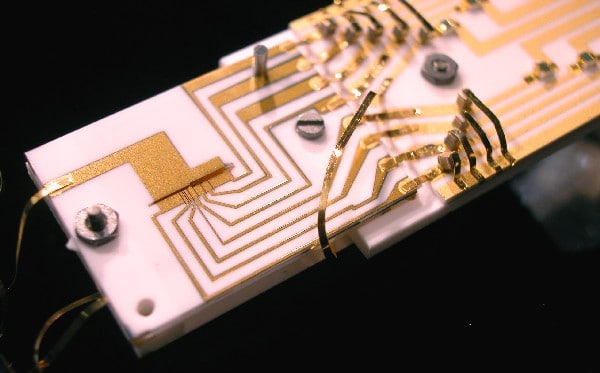With the Physics World 2019 Breakthrough of the Year due to be announced on 12 December, Physics World journalists look back at the past decade of winners and explore how research in that field has moved on. Here Michael Banks examines the 2009 breakthrough for the first “quantum computer”

“A tour de force” is how physicist Boris Blinov from the University of Washington described research carried out at the National Institute of Standards and Technology (NIST) in Boulder, Colorado, in 2009. For decades physicists had dreamt of building a quantum computer that can solve problems faster than a conventional counterpart. Then in August 2009, a NIST team led by Jonathan Home unveiled the first small-scale device that could be described as a quantum computer. The work represented a huge step forward – so much so that we choose this development as the very first Physics World 2009 Breakthrough of the Year 10 years ago in 2009.
Building up to the breakthrough, Home’s team had used ultracold ions to demonstrate separately all of the steps needed for quantum computation – initializing the qubits; storing them in ions; performing a logic operation on one or two qubits; transferring the information between different locations in the processor; and reading out the qubit results individually. But in 2009, the group made the crucial breakthrough of combining all these stages onto a single device. Home’s set-up had an overall accuracy of 94% – impressive for a quantum device – but not good enough to be used in a large-scale quantum computer.
At the time, the field of quantum computing was very much in its infancy and more work needed to be done before they could become a commercial reality. Since Home’s work researchers have made a number of big steps forward in quantum computing including the first implementation of a quantum version of the “Von Neumann” architecture found in personal computers, making quantum computers more robust as well as programmable and reconfigurable. Google reports quantum supremacy in draft paper
Several major technology firms have entered the field or ramped up their efforts too – notably Google, Microsoft and IBM – while the Canadian firm D-Wave Systems has been selling quantum computers with an increasing number of “quantum bits”, or qubits. Its latest model having 2000.
The most recent and – to date – highest-profile result was the announcement in October that Google had used a 53-qubit quantum computer to reach “quantum supremacy” – a term to denote that a quantum computer can solve a problem in a significantly shorter time than a conventional (classical) computer. Although, Google’s machine outperformed a classical computer on a very specific problem, the move marked a major milestone for the field.
A decade on from the world’s first quantum computer on a chip, we have now entered the era of quantum supremacy or “quantum advantage” as some would rather have it. The coming decade promises to be equally exciting.



